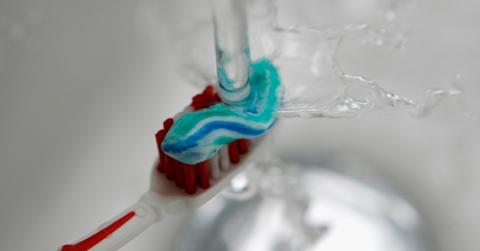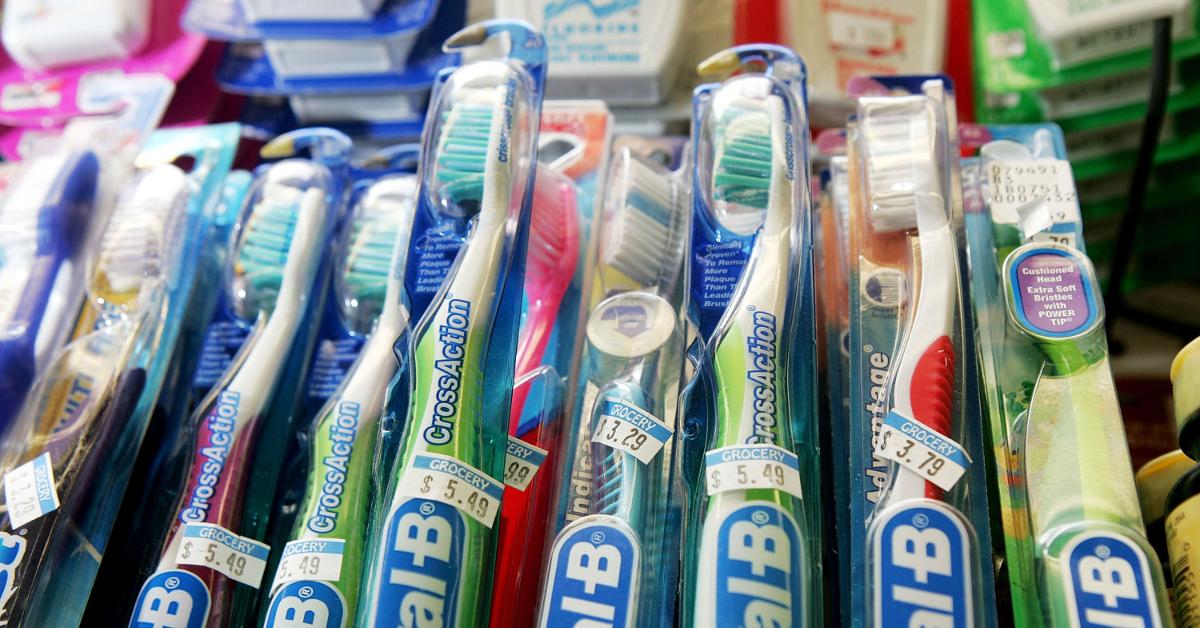The Colored Bristles on Toothbrushes Aren’t a Purely Stylistic Choice
Published Nov. 10 2021, 5:49 p.m. ET

Planet Earth is full of wonderful mysteries, like the fact that octopuses are probably aliens who are far more intelligent than we give them credit for, or that hyenas can change their gender basically at a whim.
But then, there are also smaller scale micro-mysteries that have to do with products that we human beings use on a daily basis, like toothbrushes. Do you know the reason why they have colored bristles?
Why do toothbrushes have colored bristles?
Nearly every major brand of toothbrush is sold with nylon bristles, and some of them are colored. It's easy to just chalk this up to a design choice, but those colors are there for a purpose: to clearly indicate how much toothpaste you should be putting on the brush.
This is especially true of toothbrushes for little kiddos. You don't want to inundate their mouth-cleaning sticks with toothpaste because A) it's wasteful, and B) you know the little suckers are probably going to slurp all of the stuff down and not get a drop of the paste on their teeth.

As it turns out, there are tons of people who are using way too much toothpaste, and it's probably because they aren't following the colored-bristle technique.
However, adults with full-grown teeth really shouldn't have to worry about over-exposing their chompers to too much toothpaste, it's kids who really need to watch out.
You can't really trust kids with not inundating their toothbrushes with gobs of paste, however, their parents/guardians might want to ensure that they aren't being exposed to too much flouride.
How can fluoride be bad? Isn't it supposed to be good for your teeth? Yes, it definitely is, however, there's a risk of contracting "dental fluorosis."
Norah Ayad, the senior vice president of the Australian Dental Association in Queensland told ABC, "Fluoride in too higher concentration mixes with the other minerals that are trying to develop in our teeth. We have multiple minerals that make up our teeth and it basically changes the ratios."
There are plenty of viral posts too about the importance of "toothpaste indicators" for children, like this one by Holly Benn, who was flabbergasted to learn that the colorful bristles served a purpose that wasn't just cosmetic.
But what about colored bristles on adult toothbrushes, what are they used for?
So, if most adults aren't at a high risk of putting too much toothpaste on their brushes and contracting dental fluorosis, then why do grown-up toothbrushes have bristles of different shades?
It's easy to just chalk it up to a cosmetic choice, which can certainly be the case, but there are some manufacturers that included color-changing bristles to indicate when it's time to finally swap out the brush.
The American Dental Association recommends that folks change out their toothbrushes every three to four months, or when the bristles get frayed.
So there you have it: Make sure you're not giving your kids too much toothpaste (you don't want their teeth getting stained or discolored due to dental fluorosis) and adults need to make sure that they're swapping out their brushes and not be such filthy-mouthed animals.